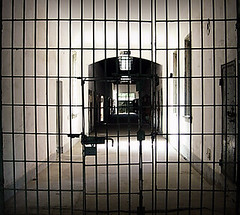A position paper from the Society for Adolescent Health and Medicine (SAHM) recently published in the Journal of Adolescent Health calls on professionals in juvenile justice, public health, law, government and other fields to take steps to encourage the healthy development of LGBT (lesbian, gay, bisexual and transgendered) youth, who are at greater risk than others for bullying and victimization. Lack of acceptance by others has been shown to subject them to greater stress, leading to risky behavior and mental health issues that can land them in the juvenile justice system.
The paper also urges professionals to better understand the needs of LGBT youngsters and to advocate for policy changes to support them at school, at home and in child welfare and juvenile justice settings.
In one study cited in the paper 85% of LGBT students said that they had been verbally harassed, 40% reported physical harassment and two thirds said they felt unsafe at school. Another study discussed in the report links LGBT victimization to nightmares, post-traumatic stress disorder, substance abuse and suicide attempts.
The SAHM paper urges the enactment of anti-bullying laws and policies and encourages professionals to educate their communities about preventing victimization of LGBT adolescents. Additional research into LGBT health needs is also needed.
The paper takes a strong stance against “reparative therapy” intended to alter individuals’ sexual orientation.
The document’s lead author Dr.David Reitman declares:
Science has firmly established that gender identity and sexual orientation are not choices, and there are a lot of data indicating that reparative therapy is harmful.
The paper states that juvenile justice agencies should develop policies to safeguard the physical and emotional well-being of detained youth. Agencies should partner with public health practitioners to access expertise on health issues facing LGBT youth, the report adds.
A major concern is LGBT youth being isolated, discriminated against or ignored in detention facilities. Other concerns are gender-based housing decisions and continuity of hormone treatment for transgender youth. SAHM recommends that juvenile justice facilities access guidelines published by other groups for serving youth in group facilities.
Reitman adds:
For juvenile justice facilities in particular the data show that there’s a sense that it’s acceptable for staff to use derogatory language or allow kids to do so. Providing ongoing education to staff is even more important in these settings, as is requiring staff and inmates to behave respectfully toward one another. Ignoring the issue is harmful, because when staff fail to call kids out on it, it’s viewed as an unspoken endorsement.
To support LGBT youth, professionals running programs need to set up rules to ensure that bullying isn’t tolerated. Young people must know they are expected to treat each other with respect, and workers need to hold youth who do not do so accountable. If staff members hear unacceptable language being used, they should talk to the speaker about how it makes others feel. If any young person seems particularly anxious, depressed or withdrawn, possibly due to bullying, they should be connected to appropriate mental health services.
LGBT youth face a number of challenges and risks other teens don’t. Providers working with these adolescents must learn to recognize these challenges and support youth to help them achieve self-acceptance and healthy development.



















































